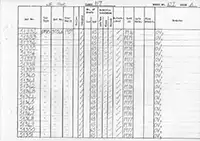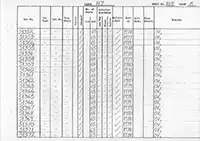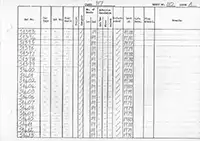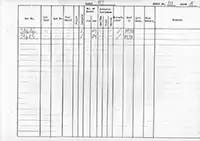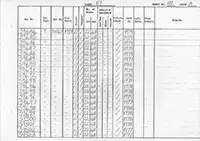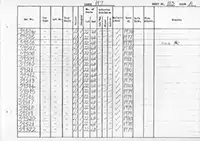Class 117 Pressed Steel 3-car DMUs
Description
The vehicles were of a high-density (suburban) layout, built to drawings supplied by Derby based on their 116s.
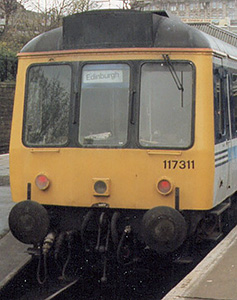

Cab
The cab fronts were very similar to the BRC&W Class 118s. Some, but not all, had differences to tell the two apart. All the 118s had a much more pronounced curve on the top of the four-character headcode box on the roof dome. The power cars in the first three Class 117 sets and the DMBS from the fourth set (51332/3/4/5 and 51374/5/6) had the same curved top, but all the others had a much more subtle and flatter looking top.
The two images show the two types, the green liveried set shows the more common type and the Regional Railways liveried set has the early style.
Most were delivered without marker lights, giving the front a rather plain appearance particularly when the yellow end was added with rail blue. It seems (based on notes on the Diagrams) that the last three pairs of power cars were delivered with marker lights. They were added later to all the others in the late 1970s / early 1980s, as seen in the colour image, and this vehicle also had a central headlamp fitted.
If a set had a flat top indicator box, or was in unlined green livery, it would be a 117. Otherwise it's pretty tough to tell them apart!
Drivers cab handrails started out as having a dual purpose of being hollow and acting as the drain for the gutters. These were always blocking so a nomal handrail was later fitted.
Originally they had 'square' (or 'cut') buffers - large circular ones that appeared to have the top and bottom cut off. Later other types could be found such as oval or large round ones - which 51332 had fitted on it's first works visit.
WR AWS (ATC) was originally fitted, in the 1970s they were dual fitted with standard AWS and then the WR ATC was removed.
The power train was pretty standard, Leyland 680 engines, R14 gearboxes and F239 final drives.
The exhausts starting out as being the Derby type joining together in a box at roof level, this can be seen in the works images. There were later changed to the normal individual style.
Interior


Inside, the second class seats began with maroon with tan headrests. The floor covering was green and the partitions were in light tan coloured 'wood grain' formica. The drivers cab seats were green.
The first image shows the second class interior in 1963, Adrian Vaughan. The second image in colour shows interior of 51387 in 1975. The wall panels are the same, the seats have been retrimmed in trojan moquette with black headrolls. Graeme Phillips Collection.
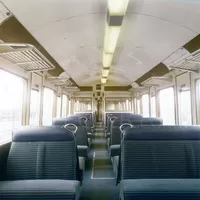

Other seat coverings were used over the years, such as blue check which was added during refurbishment, seen in the third image. The wall panels are now plain and fluorescent lighting fitted.
In their final years the strippy pattern the final image was used in some vehicles, this is 51339 in 1999, Michael Laing.
View more interior images.
Cab Replacement
One vehicle - 51396 - had a replacement cab fitted at Doncaster in October 1987 from a Class 116 (set C319, so either 53868 or 53918). It retained the Class 116 style roof dome making it easily recognizable. What happened to the vehicle to warrant it requiring a new cab is unknown.
Wiring Schematics
Dated January 1992. This is a 4mb PDF, courtesy of Chris Bull.
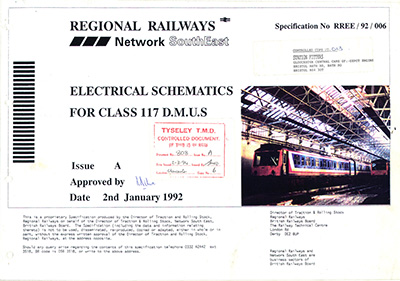
Asbestos
The vehicles were built without blue asbestos. They were included in a vehicle log kept by the RTC at Derby dated circa 1984 which included the asbestos status for each vehicle, the pages of which are included below.
In the asbestos columns the / meant they were not built with blue asbestos, in the remarks column OV meant open van (no cage was fitted).
Summary
Orders
Description
Gangways
Diagrams
Works Photographs
Numbering & Driving Inst.
Set Numbers
Liveries
Operations
Refurbishment
Non-Passenger Use
Images
Details about preserved Class 117s can be found here.



